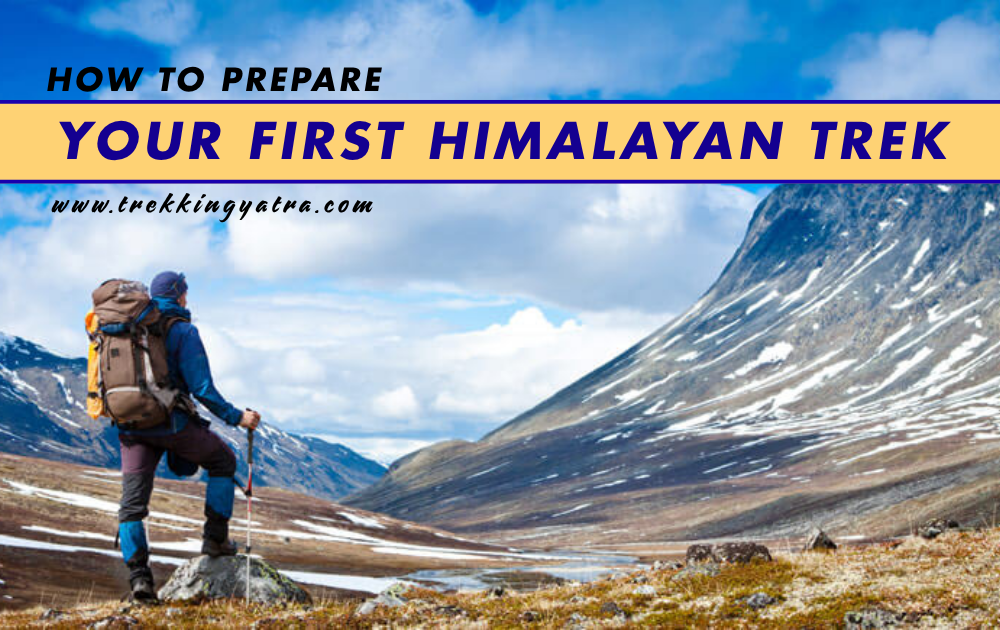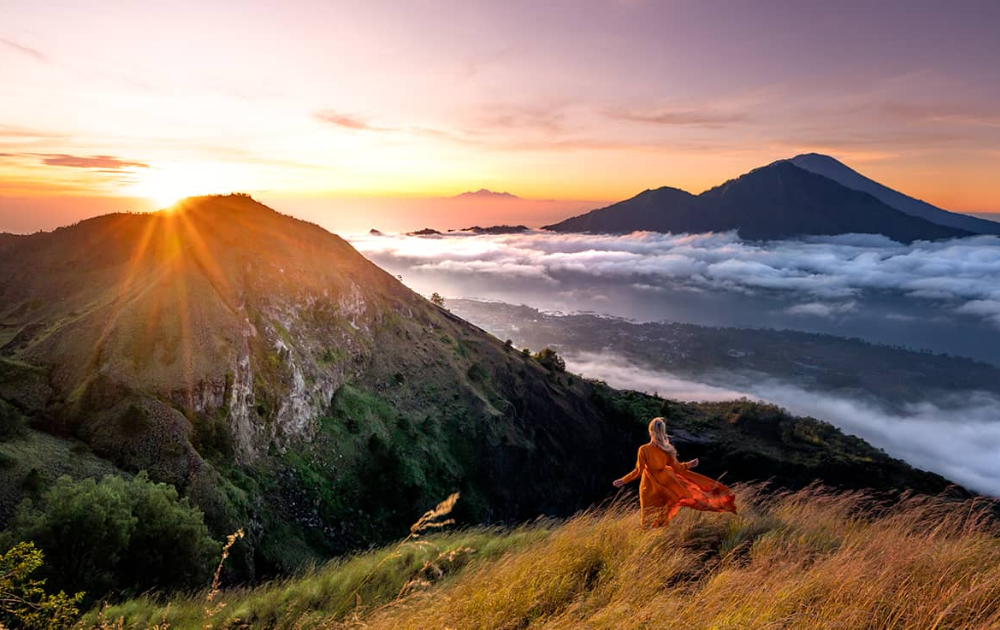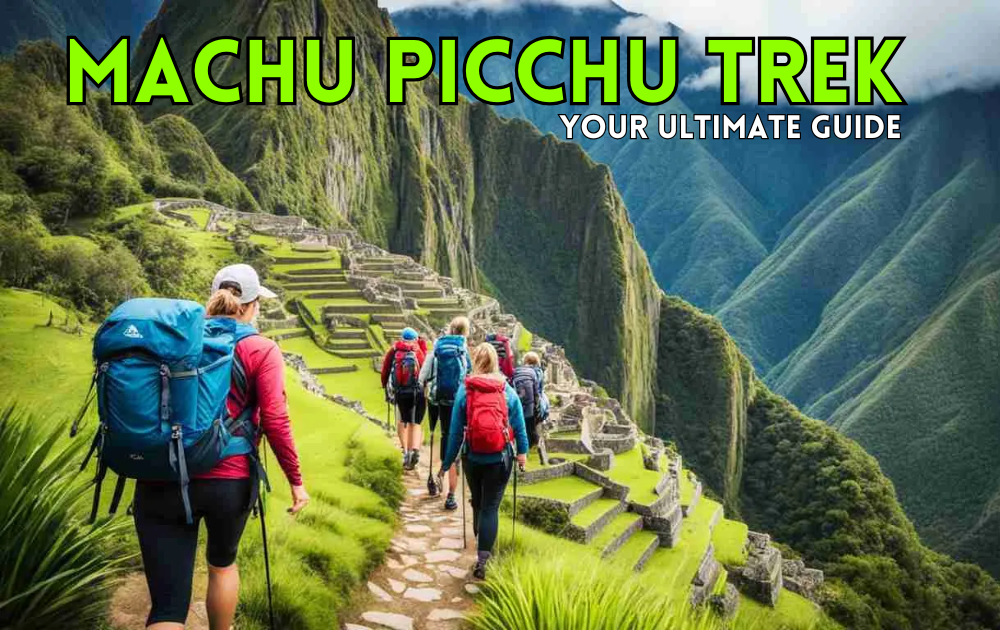🏔️ How to Prepare for Your First Himalayan Trek (Beginner’s Guide)
There’s something magical about standing amidst the mighty Himalayas — snow-dusted peaks, whispering pine forests, and crisp mountain air that make you feel alive. Trekking in the Himalayas isn’t just a physical adventure; it’s a spiritual experience. But for beginners, the thought of a high-altitude trek can feel intimidating — from fitness doubts to packing confusion and fear of the unknown.
If you’ve ever dreamed of walking through the clouds, witnessing golden sunrises, or camping beside a glacial lake, this guide is for you. Whether you’re planning Kedarkantha, Dayara Bugyal, or Triund, this step-by-step Himalayan trek preparation guide will help you get ready like a pro.
Let’s start your journey — the right way.
🥾 1. Understand What a Himalayan Trek Really Means
Before you lace up your boots, it’s important to understand what a Himalayan trek actually involves. Unlike hill walks or local hikes, Himalayan treks include:
-
High altitudes (8,000–13,000 ft)
-
Steep climbs and long walking hours
-
Rapid weather changes
-
Basic camping or tea house stays
Common beginner treks:
-
Kedarkantha Trek (12,500 ft) – Perfect winter snow trek ( Kedarkantha Trek: Complete Guide )
-
Triund Trek (9,000 ft) – Ideal weekend trek ( Triund Trek vs Kareri Lake Trek 2025 )
-
Dayara Bugyal Trek (12,000 ft) – Great for beginners with scenic meadows ( Dayara Bugyal Trek )
-
Har Ki Dun Trek (11,500 ft) – Moderate with cultural beauty ( Top 10 Winter Treks in India )
Each trek has its own charm, so start with an easy-to-moderate one before aiming for higher altitude routes like Rupin Pass or Brahmatal.
💪 2. Build Your Fitness and Stamina
Fitness is the backbone of trekking. Even a beginner trek can feel exhausting if you’re not physically prepared.
Start Training 6–8 Weeks Before Your Trek
-
Cardio workouts: Jog, cycle, or brisk walk 30–45 minutes daily.
-
Stair climbing: Helps strengthen leg muscles and simulate uphill walking.
-
Strength training: Focus on squats, lunges, and planks.
-
Breathing practice: Include deep breathing or pranayama — crucial for altitude adjustment.
A simple goal:
You should be able to walk 5 km in 45 minutes without feeling tired.
Bonus Tip:
Carry a 10–12 kg backpack during walks in the final two weeks to prepare your body for real trek conditions.
🎒 3. Get the Right Trekking Gear (With Product Links)
Having the right gear can make or break your experience. Here’s your essential Himalayan trekking checklist with product suggestions available on Amazon India:
Trekking Shoes
A sturdy pair of trekking shoes provides grip, ankle support, and protection from cold.
Backpack
Opt for one with adjustable straps and a rain cover (40–60L capacity).
Clothing Layers
Layering is key in the Himalayas — it helps you adjust to sudden temperature changes.
-
Base Layer: Thermal top & bottom
-
Mid Layer: Fleece or down jacket
-
Outer Layer: Waterproof & windproof jacket
Suggested products:
Accessories
-
Woolen cap and gloves
-
Sunglasses with UV protection
-
Trekking poles (essential for downhill sections)
Camping & Other Essentials
-
Headlamp with extra batteries
-
Reusable water bottle (avoid plastic)
-
Power bank
🧳 4. Smart Packing: What to Carry and What to Leave
Pack light but smart — that’s the golden rule. A heavy backpack will drain your energy quickly.
✅ Must-Carry Items:
-
ID proof (Aadhaar / Passport)
-
Trekking shoes + 2 pairs of socks
-
Thermal wear (upper & lower)
-
Waterproof gloves
-
Sunscreen (SPF 50+)
-
Lip balm and moisturizer
-
Power bank
-
Small medical kit (Diamox, Crocin, Band-Aids, ORS)
-
Toilet paper, sanitizer, and a quick-dry towel
🚫 Avoid:
-
Jeans or cotton clothes
-
Fancy jackets or bulky sweaters
-
Unnecessary gadgets
-
Perfumes or deodorants (they attract insects)
Pro Tip: Keep your clothes in separate plastic bags for waterproofing.
🏕️ 5. Acclimatization and High-Altitude Tips
Altitude sickness (AMS) can affect anyone above 8,000 ft, even the fittest trekkers.
Here’s how to stay safe and adapt easily:
-
Ascend gradually: Gain altitude slowly; don’t rush.
-
Hydrate well: Drink at least 3–4 liters of water daily.
-
Avoid alcohol or smoking before and during the trek.
-
Take Diamox (after consulting your doctor).
-
Sleep well and avoid overexertion.
If you feel nausea, headache, or dizziness, inform your trek leader immediately.
The mountain will always be there — your health comes first.
🍱 6. Food & Nutrition for Himalayan Treks
Trekking burns a lot of calories. Eat light but nutritious meals that fuel your stamina.
During Trek:
-
Breakfast: Oats, porridge, or boiled eggs
-
Lunch: Rice, dal, and vegetables
-
Snacks: Energy bars, nuts, and glucose biscuits
-
Dinner: Soup + rice or chapati
Carry:
Avoid heavy, oily foods or excessive caffeine — it can dehydrate your body.
🌦️ 7. Weather & Timing: When to Plan Your First Trek
The best time for beginners is:
-
Summer: May to June (pleasant weather)
-
Autumn: September to November (clear skies, stable trails)
-
Winter (for snow lovers): December to February (moderate treks like Kedarkantha or Dayara Bugyal)
Avoid monsoon months (July–August) due to landslides and slippery paths.
Example beginner treks by season:
-
Summer: Valley of Flowers, Hampta Pass
-
Autumn: Har Ki Dun, Kuari Pass
-
Winter: Kedarkantha, Brahmatal
🗺️ 8. Choose a Reliable Trek Operator
A good trek company ensures your safety, logistics, and overall experience.
When selecting, check:
-
Safety record
-
Medical support (pulse oximeter, oxygen cylinder)
-
Group size (avoid overcrowded groups)
-
Trek leader certification (Wilderness First Aid)
-
Reviews and feedback
Some reputable operators include Indiahikes, Trek the Himalayas (TTH), and Bikat Adventures.
🏞️ 9. Mental Preparation: Trekking Is a Mind Game Too
Himalayan trekking isn’t just about physical fitness — it’s also mental strength.
You’ll face:
-
Sudden weather changes
-
Long walking hours
-
Minimal comforts
Keep a positive attitude. Remember, every step brings you closer to the summit — and your own growth.
Carry a journal, talk to locals, and enjoy the silence of the mountains. That’s the real beauty of trekking.
📸 10. Capture Memories, But Leave No Trace
We all love to take pictures for Instagram — and you should! But always follow eco-friendly trekking principles:
-
Don’t litter
-
Avoid plastic bottles
-
Carry your waste back
-
Respect local culture and wildlife
The Himalayas give us peace — let’s return the respect by keeping them clean.
🧘♂️ 11. Bonus: Practice Yoga and Breathing
Simple yoga postures and pranayama improve flexibility and lung capacity:
-
Anulom Vilom – for breathing control
-
Surya Namaskar – for stamina
-
Tadasana & Vrikshasana – for balance
Do these daily for at least 15 minutes — you’ll thank yourself on steep climbs.
🏔️ 12. Sample 7-Day Preparation Routine (Final Countdown)
| Day | Activity | Notes |
|---|---|---|
| Day 1 | 5 km jog + 20 squats | Build stamina |
| Day 2 | Stair climb (20 floors) | Strengthen legs |
| Day 3 | Rest + yoga | Recovery |
| Day 4 | 6 km brisk walk | Endurance |
| Day 5 | Hill hike with a backpack | Real trek simulation |
| Day 6 | Breathing practice + light cardio | Oxygen management |
| Day 7 | Rest + gear check | Ready to go! |
🏕️ Conclusion
Preparing for your first Himalayan trek isn’t just about reaching the summit — it’s about the journey of discipline, patience, and self-discovery.
From fitness to gear, each step you take before the trek decides how magical your experience will be on the mountain.
When you finally stand at the peak, surrounded by snow-clad ranges, you’ll realize — the preparation was worth every second.
So, tie your laces, pack your bag, and say yes to the mountains.
The Himalayas are waiting for you. 🌄


